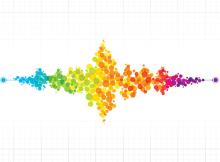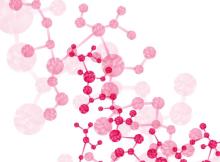PSC research is grouped into five primary research areas: 1) New Dynamics of Population Diversity, 2) Formal Demography and Demographic Methods, including fertility, reproductive health, and mortality, (3) Child Development and Human Endowments, (4) Structures of Inequality and the Life Course, including changing mechanisms of social mobility, and (5) Population and the Environment, addressing both the demographic causes and consequences of environmental change. Within and across these we highlight contributions to four emerging innovative perspectives in population research: i) dynamics of classification and identity which encompasses the growing recognition of fluidity in demographic classifications, such as race, ethnicity, and gender, in connection with context and new social developments such as genetic testing, life-course events, or political conditions; ii) attention to the changing dynamics of population mobility, which addresses the diversity and changing motivations and triggers of international and internal migration movements; iii) new data and methods for mortality analysis, especially child mortality but also for the analysis of the impact of the COVID-19 pandemic and the reversal in mortality in the United States, and iv) computational demography, the emerging orientation in demography, and the social sciences more broadly to employ computational modeling, network analysis, text mining, machine learning, neural network, deep learning, large language models, data visualization, and other computational methods to analyze and interpret traditional and new sources of demographic data. Within all of our primary research areas, PSC researchers are extending and exploiting our strong international and local connections to elaborate comparative approaches to population and health issues and enhance local research community access to shared resources.
New Dynamics of Population Diversity
New Dynamics of Population Diversity. Over the next 5 years, we expect to build on the PSC’s strengths in demography and the social study of race, ethnicity, and migration and Penn’s targeted institutional investments to advance work on a central issue of the 21st century: the demographic determinants of health and health disparities.
Formal Demography and Demographic Methods
Formal Demography and Demographic Methods. The PSC is anchored by a long, distinguished tradition (J Durand, D Thomas, R Easterlin, van de Walle, F Furstenberg, S Preston, J Menken, D Massey, SP Morgan, H. Smith, H-P Kohler) in demography.
Child Development and Human Endowments
Child Development and Human Endowments. Many differences in health and social outcomes between and within populations are functions of individual differences in the characteristics with which individuals are endowed, from genes and their phenotypic expression through family background characteristics. These outcomes also depend on the health, nutritional, and educational resources that they are granted, acquired, or invested in across the life cycle, especially in childhood, adolescence, and young adulthood.
Structures of Inequality and the Life Course
Structures of Inequality and the Life Course. This is a new PRA for this application that builds on a longstanding tradition within the PSC of focusing on how changes in the social institutions undergirding inequality, such as families (Furstenberg, Lareau) and occupational structures (Allison, England), connect with lifecourse processes in affecting health inequalities and well-being.
Population and the Environment
Population and the Environment. This new primary research area within the PSC was introduced in the prior cycle and will remain a topic of concentration for the next five years. Two projects are underway that are distinguished not only by a demographic or population perspective on the environment but by their multidisciplinary character, which brings new faces and new expertise to the PSC.
International Population Research
International Population Research. Studies aimed at improving health and life chances in the world’s population through investments in nutrition and schooling, fighting HIV/AIDS, and migration are all buttressed by a PSC infrastructure that aids international population research.





